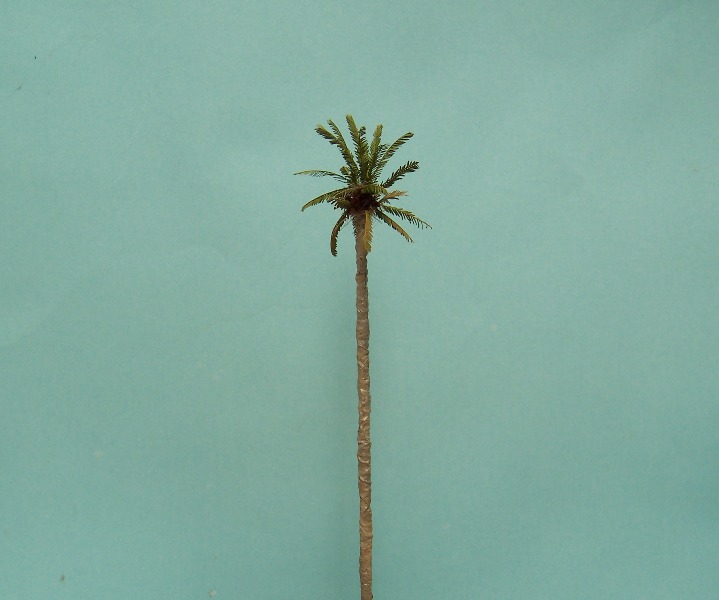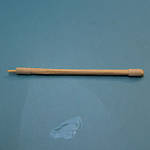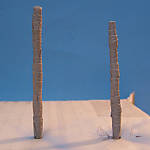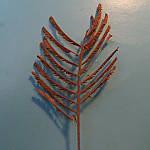1⁄35Making Small Palms Part II
11
Comments
Introduction
Continuing on from my first feature (see here), this step-by-step explains how the techniques shown in part 1 can be modified to produce new small palms for use in a tropical diorama. The main difference from the previous feature is that this method makes a small palm tree, as opposed to a fern or plant. Like the first feature, this method also makes good use of nature. Not one single piece of PE or plastic is used to produce the palms. This cuts down cost, as well as the frustration of waiting for the PE to arrive, assembling the tiny parts etc. Plus, in my opinion, nothing beats the authenticity of nature.Materials used
- A suitable small fern plant (If you think ferns don’t grow in your area, you might be surprised to find some underneath a rotting log, or otherwise the local nursery will stock them).
- Hemp rope (or Jute twine).
- Toothpicks.
- Masking tape.
- PVA glue.
- A selection of green, brown, grey and yellow paint. I use enamel but anything is fine.
- Imagination.
construction
The Trunk This palm tree was designed to (but not limited to) stand approximately 10cm tall, resembling a smaller species or a young, growing palm. For the trunk, a toothpick is the perfect armature to use. Next, take a piece of masking tape and cut into small strips, about 5mm x 15mm in size. Starting at the top, wind each strip of tape around the trunk, slightly overlapping each previous piece until the bottom is reached. This produces a result similar to the appearance of many palm trees in nature, giving the trunk a ringed texture. After the trunk is fully taped up, give it a brush of PVA glue to seal the tape on. Next comes the painting of the trunk. In nature, the colours of palm trunks vary from dark-grey to a browny-grey. Since I own an airbrush, I have decided to use it to paint the trunks a dark-grey. This gives me an even and streak-free finish. A further wash of dark-grey was applied by brush to bring out the depth around each ring. The Foliage: Just like the previous article, I have used natural ferns to replicate palm fronds. I also explained previously that it was necessary to preserve the ferns before using them in a diorama. After further experimenting, I have found that some natural materials can be preserved simply by painting. The ferns I am using in this feature can be preserved in this way. The first step is to cut a small fern branch from the plant and leave it to dry out for a few hours. Depending on the species, drying times will vary. There should be very little moisture inside the fern when it is time for painting. Step two. If you have an airbrush, prepare a paint mixture of roughly 70% green to 10% yellow to 20% thinner. Again this mixture will vary depending on the type of paint or colour you want to go for. Paint the ferns and leave to dry. Step three. Glue some jute twine to the top of the trunk to replicate the stringy old growth. Glue the fronds onto the trunk. You can see that the fronds towards the top are ‘healthy’ while dying fronds droop towards the bottom. The dying frond effect was achieved simply by leaving the fronds for a few days before painting them a brown-yellow colour. To add further realism, the fronds should all be yellowed the further down the trunk they are. This can be achieved by giving the tips off each palm a yellow wash of paint. Step four: Once the fronds have dried in place, your small palm is finished and ready to glue or attach to the base.Finally
I hope you have enjoyed the article and now have at least some inspiration to make your own jungle foliage. Remember, this method can be adapted to suite your own natural produce and can be a money lifesaver compared to buying PE. It only takes a bit of imagination to result in some fantastic looking plants for your scene. Note: Invariably, some of the techniques or ideas explained here may have originated from fellow members on the site. It is not my intention to plagiarise anybody, rather to simply lay out in an accessible format these techniques for reference to other people. I must thank CheeKeong Loo [CKLOO] for his method of making trunks and his permission to publish it here.Comments
Steve, much as I like to bask in the warm glow of praise, you will have to thank Chas for this one.
I only post it up, I don't know what makes it go..
MAR 20, 2008 - 02:24 PM
Chas,
Thanks for the article. Henk thanks for putting it up. Keep em coming.
MAR 20, 2008 - 02:33 PM
Interesting idea. Nicely done.
"Hemp rope"
??? OK boyz and girlz, resist the temptation to smoke it!!
MAR 20, 2008 - 03:51 PM
As Chas. As with all good articles like this, easy to get items, cheap, simple and well explained/documented. Fits all categories ... perfect .... and very realistic and effective. Cheers.
MAR 20, 2008 - 09:12 PM
Hi everyone,
Thankyou for the compliments, I hope it will help the potential Jungle diorama makers out there to get started, without breaking the bank.
My thanks must go to Henk for presenting the feature very nicely.
And to CK Loo, who kindly allowed me to adapt his method of making the trunk rings, and publish it in the feature.
Regards,
Chas
MAR 21, 2008 - 12:07 AM
I've been playing around with the technique. Here is another variation, this time with a longer trunk of a different texture:
 The picture doesn't show it very well, but seaweed was used to depict old growth/ flowering.
Chas
The picture doesn't show it very well, but seaweed was used to depict old growth/ flowering.
Chas
 The picture doesn't show it very well, but seaweed was used to depict old growth/ flowering.
Chas
The picture doesn't show it very well, but seaweed was used to depict old growth/ flowering.
ChasMAR 22, 2008 - 06:52 PM
To throw a spanner in the works, would it be possible to make something like this is 1-350, or better still for me, in 1-700 scale ? The tall palm is outstanding and the problem being, you make it look easy, I'm all fingers and thumb, got a piece of wire stuck in one finger, blood everywhere and a bin full of cuttings, giving up isn't what I like, but I just can't get to grips with this, and like I said, could you PLEASE ------- please do something like this in 1-700 ?
AUG 09, 2010 - 03:23 AM
Excellent idea, well presented - I've saved this for the future, when the PT boats call...thanks
AUG 14, 2010 - 01:08 PM
Copyright ©2021 by Chas Young.. Images and/or videos also by copyright holder unless otherwise noted. The views and opinions expressed herein are solely the views and opinions of the authors and/or contributors to this Web site and do not necessarily represent the views and/or opinions of Armorama, KitMaker Network, or Silver Star Enterrpises. All rights reserved. Originally published on: 2008-03-21 00:00:00. Unique Reads: 33800



























